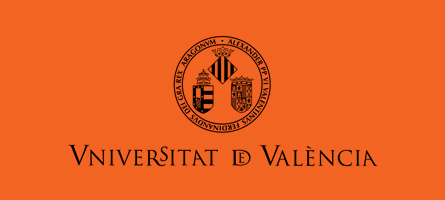News Consumption in Italy in an Era of Crisis and Innovation: The Decline of Print and TV News
DOI:
https://doi.org/10.7203/drdcd.v0i9.270Resumen
The article focuses on the contemporary crisis within Italian journalism against the backdrop of the hybrid media system and the global proliferation of disinformation strategies. Over the past five years, a new stage of information consumption has been evolving in Italy. This transformation is driven not only by the fact that social networks have become fundamental sources of news, even though they often present isolated, biased, or fake content, but also due to the decline in the use of traditional news channels. The contemporary crisis of Italian news media will be discussed through the presentation of relevant recent changes in Italians’ information habits. This aims to connect these shifts to the traditional peculiarities that still impact the modern equilibrium between production and consumption, thereby shaping a new scenario for journalism.
Citas
ADS Accertamenti Diffusione Stampa, Agosto 2022
AGCOM. (2017). Osservatorio sul giornalismo. II edizione
AGCOM. (2019). Osservatorio sulla disinformazione online.
AGCOM. (2020). Osservatorio sulla disinformazione - Speciale Coronavirus.
AGCOM. (2022). Osservatorio sulle comunicazioni n. 3/2022,
Albright, J. (2017). Welcome to the era of fake news. Media and Communication, 5(2), 87-89.
Antenore, M., Splendore, S. (eds.) (2017). Data Journalism. Guida essenziale alle notizie fatte con i numeri. Mondadori,
Bentivegna, S., Boccia Artieri, G. (2021). Voci della democrazia. Il future del dibattito pubblico. Il Mulino.
Bergamini, O. (2006). La democrazia della stampa. Storia del giornalismo. Laterza.
Bracciale, R., Grisolia, F. (2020). Information disorder: acceleratori tecnologici e dinamiche sociali. Federalismi.it. https://www.federalismi.it/nv14/articolodocumento.cfm?Artid=42112
Cappello, G., Rizzuto, F. (2020). Journalism and fake news in the Covid-19 era. Perspectives for media education in Italy. Media Education, 11(2), 3-13.
Castronovo, V., Tranfaglia, N. (ed) (1994). La stampa italiana nell’era della tv. Laterza.
Censis (2021). 17° Rapporto Censis sulla comunicazione. I media dopo la pandemia. https://www.censis.it/sites/default/files/downloads/Sintesi_32.pdf
Chadwick, A. (2013). The hybrid media system. Politics and power. Oxford University Press.
Chambers, S. (2021). Truth, Deliberative Democracy, and the Virtues of Accuracy: Is Fake News Destroying the Public Sphere?. Political Studies, 69(1), 147–163
Corner, J. (2017). Fake news, post-truth and media–political change. Media, Culture & Society, 39 (7), 1100–1107.
Donsbach, W. (2009). Journalists and Their Professional Identities. In Stuart, A. (ed.), The Routledge Companion to News and Journalism (pp. 38-48). Routledge.
Floridi, L. (2017). La quarta rivoluzione. Come l’infosfera sta trasformando il mondo. Editore Cortina Raffaello.
Forgacs, D. (1990). Italian Culture in the Industrial Era. Cultural Industries, Politics and the Public. Manchester University Press, (trad. it. L’industrializzazione della cultura italiana (1880-2000). Bologna: Il Mulino 2000).
Hallin, D., Mancini, P. (2004). Modelli di giornalismo. Laterza.
Ireton, C., Posetti, J. (Eds) (2018). Journalism, ‘Fake News’ & Disinformation. UNESCO.
Lorusso, A. M. (2018). Postverità. Fra reality tv, social media e storytelling. Laterza.
Marinov, R. (2020). Mapping the infotainment literature: current trajectories and suggestions for future research. The Communication Review, 23, 1-28.
Mazzoleni, G., Sfardini A. (2009). La politica pop. Il Mulino.
Mazzoleni, G. (2021). Introduzione alla comunicazione politica. Il Mulino.
Morcellini, M. (2000). Mediaevo. Tv e industria culturale nell’Italia del XX secolo. Carocci.
Morcellini, M. (2011). Neogiornalismo. Tra crisi e rete come cambia il sistema dell’informazione. Mondadori.
Murialdi, P. (2014). Storia del giornalismo italiano. Dalle gazzette a Internet. Il Mulino.
Osservatorio Tecnico “Carlo Lombardi” per i quotidiani e le agenzie di informazione (2023). Rapporto 2023 sull’industria italiana dei quotidiani. Roma. http://www.ediland.it/wp-content/uploads/Rapporto_2022.pdf
Quandt, T. (2018). Dark participation. Media and Communication, 6(4), 36-48.
Newman, N., Fletcher, R., Schulz, A., Andi, S., Robertson, C. T., & Nielsen, R. K. (2021).
Reuters Institute digital news report 2021. Reuters Institute for the study of Journalism.
Newman, N., Fletcher, R., Robertson, C. T., Eddy, C., Nielsen, R. K. (2022). Reuters Institute digital news report 2022. Reuters Institute for the study of Journalism.
Riva, G. (2018). Fake news. Il Mulino.
Rizzuto, F. (2009). Giornalismo e democrazia. Palumbo.
Rizzuto, F. (2018). La società dell’orrore. Terrorismo e comunicazione nell’era del giornalismo emotivo. Pisa University Press.
Rizzuto, F. (2019). Reality versus Emotions in Italian Journalism. SOFT POWER, Revista Euroamericana de teoria, historia de la politica y del derecho, 6, 229-245.
Salzano, D., Scognamiglio, I. (2020). Voci nel silenzio. La comunicazione al tempo del Coronavirus. Franco Angeli.
Santos, J. (2009). Daring to feel. Violence, the Newsmedia and their Emotions. Lexington Books.
Scaglioni, M. (2011). La tv dopo la tv. Il decennio che ha cambiato la televisione: scenario, offerta, pubblico. Vita e Pensiero.
Schudson, M. (2003). The Sociology of News. W. Norton & Company.
Solito, L., Sorrentino C. (2020). Dalla trasmissione alla condivisione. Ripensare il rapporto fra giornalismo e cittadini. Comunicazioni sociali, 42, 207-228.
Sorrentino, C., Splendore, S. (2022). Le vie del giornalismo. Il Mulino.
Sorrentino, C. (2008). Attraverso la rete. Dal giornalismo monomediale alla convergenza crossmediale. RAI ERI.
Splendore, S. (2017). Il giornalismo ibrido. Come cambia la cultura giornalistica in Italia. Carocci.
Thussu, D.K. (2007). News as Entertainment: The Rise of Global Infotainment. Sage.
Vaccaro, S. (2020). Gli algoritmi della politica. Elèuthera.
Valentini, E. (2012). Dalle gazzette all’iPad. Mondadori.
Van Dijck, J., Poell, T., de Waal, M. (2018). The Platform Society: Public Values in a Connective World. Oxford.University Press
Descargas
Publicado
Número
Sección
Licencia
Los autores conservan los derechos de autor y garantizan a la revista el derecho de ser la primera publicación del trabajo, licenciado bajo una Creative Commons Attribution License que permite a otros compartir el trabajo con un reconocimiento de la autoría del trabajo y la publicación en esta revista.
Cuando el autor/a envía su colaboración está explicitamente aceptando esta cesión de derechos de edición y de publicación. Igualmente autoriza a Dígitos la inclusión de su trabajo en un número de la revista para su distribución y venta.







